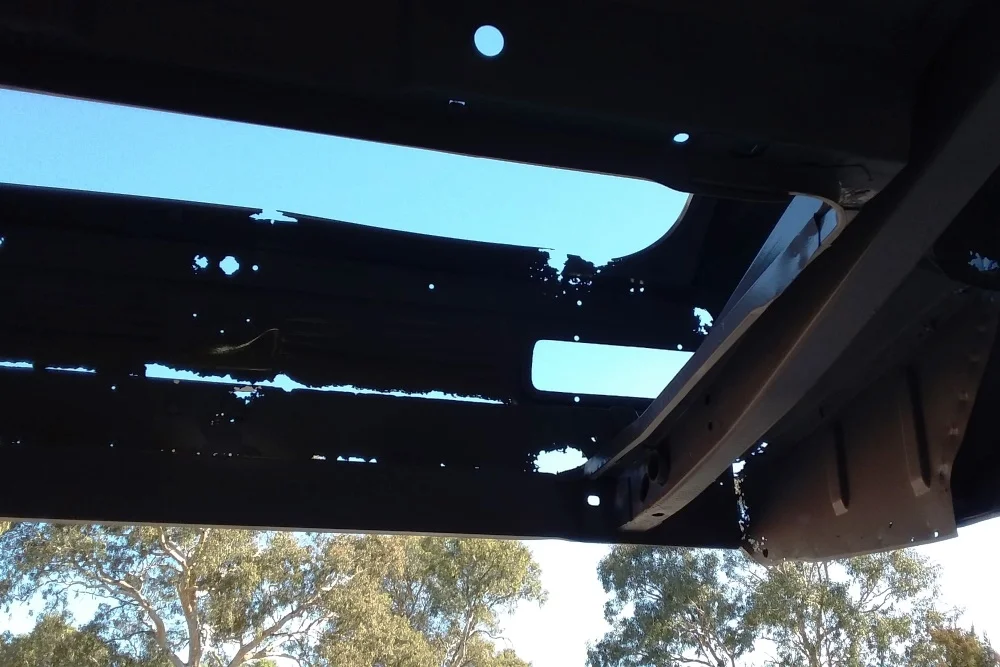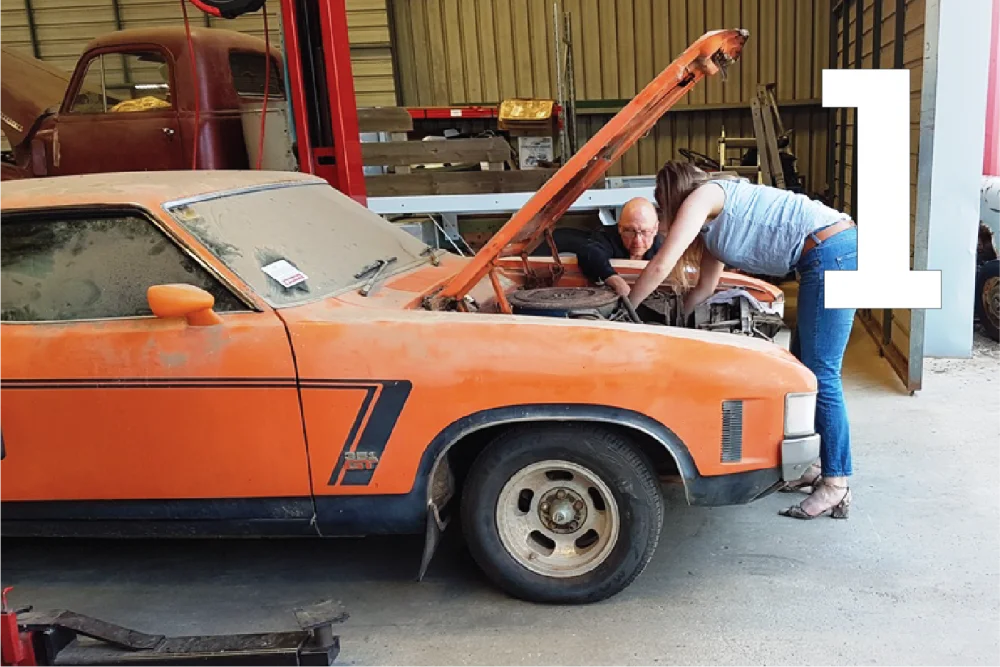Gateway 1 – Initial Assessment
Am I embarking on a vehicle restoration for the right motives?
Is my vehicle appropriate for restoring?
Before commencing on a restoration, you should review your motivations as well as assess the suitability of your vehicle for restoration.
Motivations
Over the years that we have been performing restorations, we generally find that clients' motivations for undertaking a vehicle restoration fall within these broad categorisations: heirloom vehicles, boys-toys/girls-toys, and collectable vehicles.
1. Heirloom Vehicles
An heirloom is the greatest motivation for restoring a vehicle that we see. The heirloom could represent vivid memories of a grandparent or parent, of family holidays, or of other childhood memories. Sometimes the vehicle may have been in the family for many decades. Some lucky people may still have the car they drove as a teenager, or have been able to find and buy back their favourite car they owned in their youth.
2. Boys-Toys / Girls-Toys
Another frequently seen client's motivation is the desire to have the vehicle they always wanted in their youth. Now today, many decades later, the client can now afford to buy and restore the car of their dreams.
3. Collectable Vehicles
Collectable vehicles can represent vehicles that are hugely prized and in high public demand due to their aesthetics or performance. Other collectables might be a rare survivor, or the favourite marque of a niche collector.
We Recommend ...
We recommend:
- If buying a vehicle for restoration, then purchase the best condition vehicle you can thus giving us the least amount of work to do.
- If wanting to restore a vehicle with the objective of limiting the restoration budget to less than the eventual resale value of the vehicle then stop, and sell the vehicle now. We consider that less than 1% of vehicles will be worth more than the cost of the restoration after they are restored, BUT we consider that they will have a far better ability of holding their value than, say, purchasing a new vehicle. If you have the skills, the tools, the workshop, and the time (restorations take many thousands of hours) and plan on undertaking the restoration as a hobby in your home-garage (where you are not seeking to recoup your time and effort in future value) then a poor condition base vehicle may be the challenge you seekviable for your restoration.
- If you want to do some of the restoration work yourself, and some by us, then please plan the project with us before your start work. We frequently see projects where the owner’s own handiwork or mis-sequenced activities, creates more work or inefficient subsequent work. We also see poor quality work from home handypersons that must be redone due to overlooking rust, missing fatigued metal, creation of new rust-traps, or need for safety.
Condition Assessment
After reviewing the vehicle’s significance to you, the vehicle needs a condition assessment. Ideally, the vehicle should be raised on a hoist to enable a thorough inspection of the vehicle to be conducted.
If the vehicle is immobile, we can organise for it to be transported to our workshops, or you could ask us for a price to inspect in-situ, or you could send us copious numbers of photos of the vehicle.
A thorough professional assessment can identify external tell-tales about potential emerging problems, or past poor cover-up attempts. Nevertheless, it needs to be kept in mind that external assessments are limited to what can be detected from the outside. During the forthcoming restoration process, there are three further (major) opportunities when assessments have the potential to reveal the underlying condition of the vehicle:
- When the vehicle is disassembled and also when sub-assemblies are disassembled.
- When the body is dipped to remove old paint and fillers that hide the 'sins' of the past.
- As the body, and sub-assemblies, are opened up (like layers of an onion) to reveal the internal condition of inaccessible voids.


